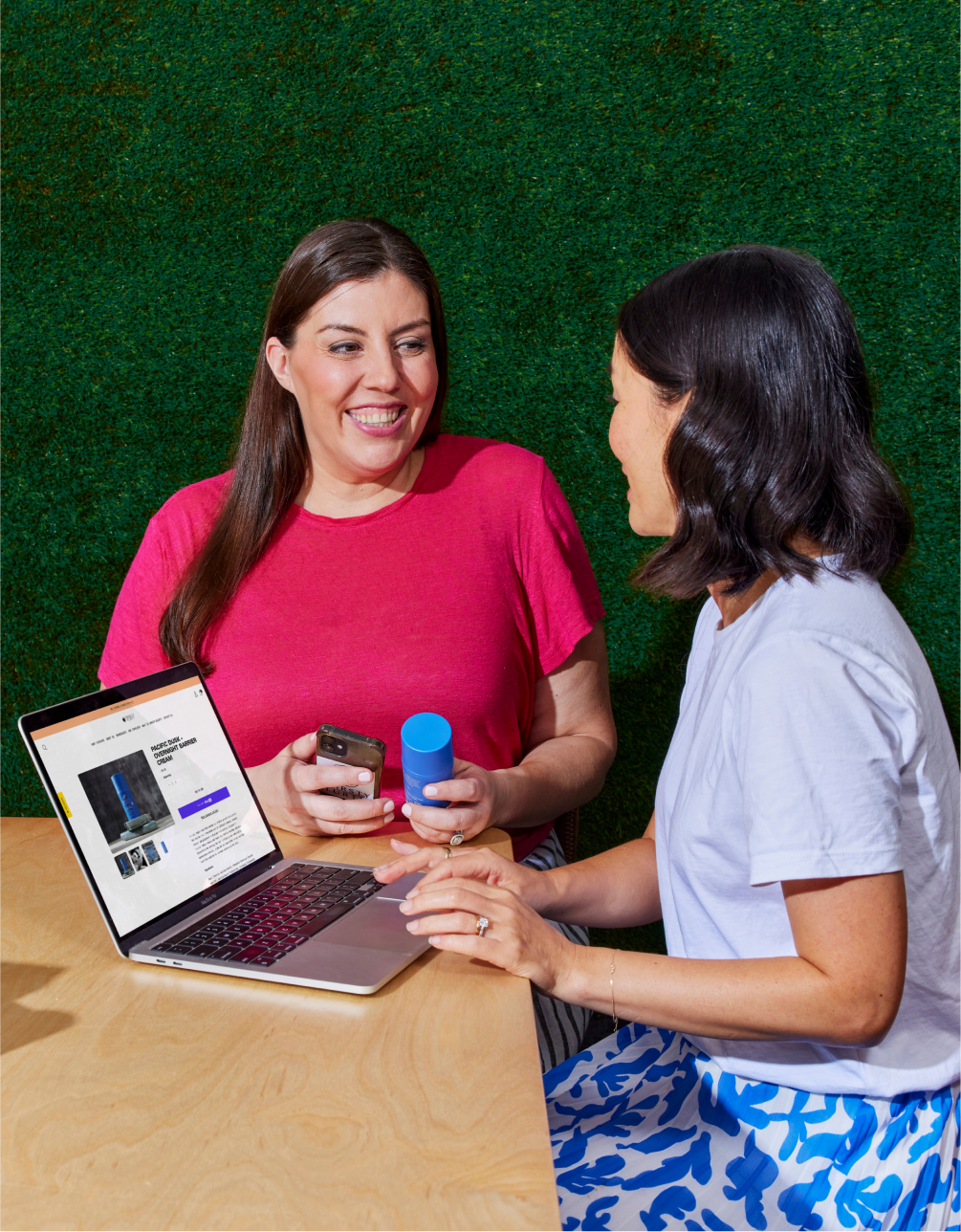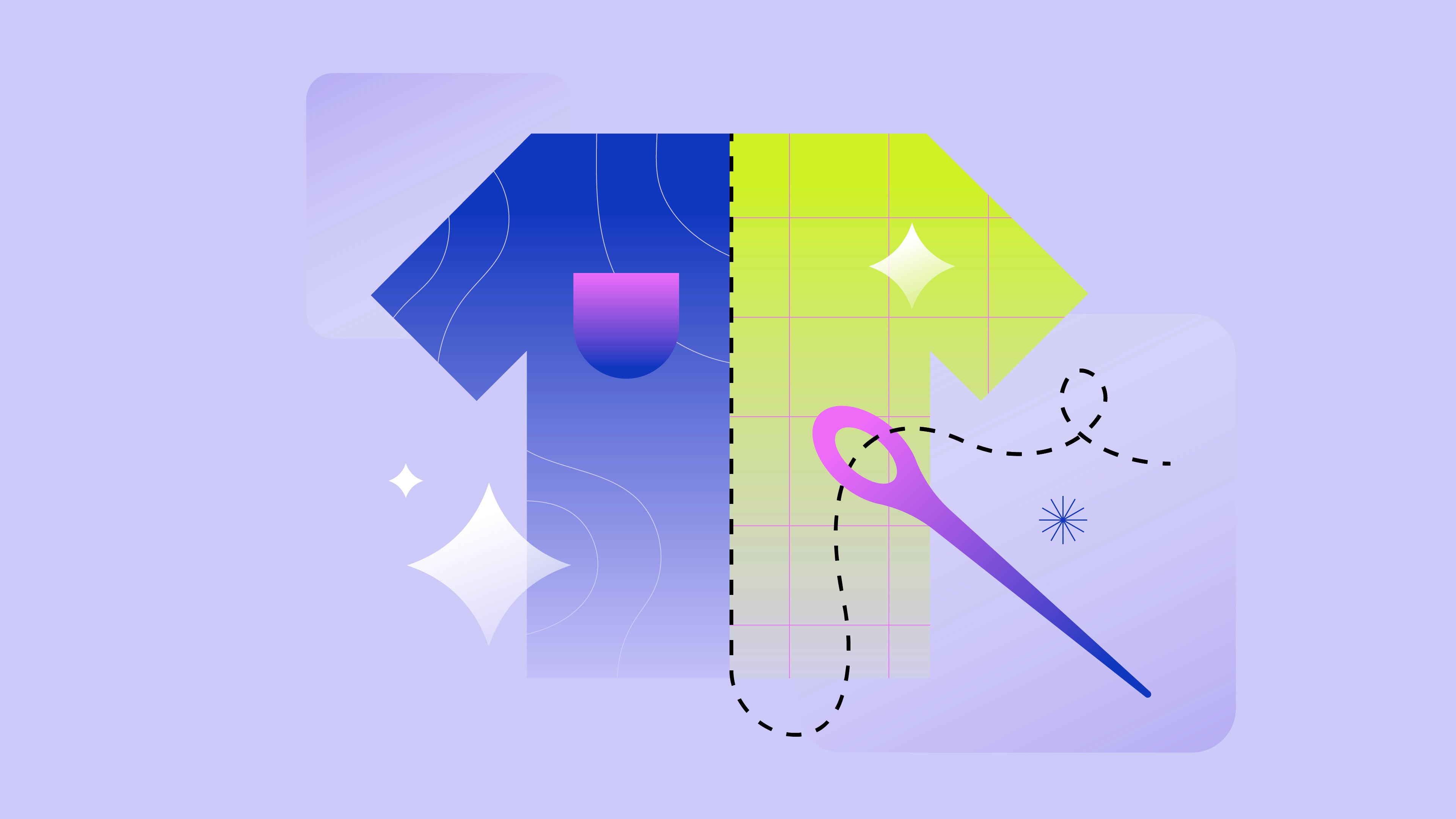Ecommerce is increasingly popular with business buyers. In November 2021, ecommerce surpassed in-person sales to become the most effective sales channel, according to a survey by consulting firm McKinsey. In other words, if you’re in the B2B fashion business, having an online presence is critical if you want to increase sales and maximize profits.
Here’s how (and why) to embrace a business-to-business ecommerce sales strategy for your fashion industry business.
What is B2B ecommerce?
Business-to-business (B2B) ecommerce refers to the online sale of products or services between businesses. It is often contrasted with business-to-customer (B2C) ecommerce and with traditional B2B commerce. Here’s a summary of their characteristics and differences:
B2C ecommerce: B2C ecommerce is a business model that involves selling products or services online directly to end consumers.
Traditional B2B commerce: In traditional B2B commerce, wholesalers sell products to retail businesses through offline channels. Sales tactics include distributing physical catalogs or having face-to-face interactions at tradeshows and industry events.
B2B ecommerce: In B2B ecommerce, businesses sell products or services to other businesses through online channels.
In B2B fashion ecommerce, retailers purchase fashion products online—typically from wholesalers—and sell these same products to end consumers through online or offline channels.
Benefits of B2B ecommerce in the fashion industry
Engaging in B2B ecommerce has multiple benefits for fashion brands. Fashion product life cycles are becoming shorter—a phenomenon known as fast fashion. This means that retailers need to make more frequent purchases from wholesalers, and B2B fashion businesses that sell through ecommerce sites can simplify the purchasing process to meet the needs of the contemporary fashion retailer.
Here’s an overview of how selling products online can benefit your business:
Ability to scale: Selling products online lets you scale your business efficiently. For example, online payment processing and inventory management tools can meet the needs of both small and enterprise businesses, meaning that your B2B ecommerce software can adapt as your company scales. On the other hand, traditional B2B businesses may need to add employees to increase capacity, a considerably more cost- and time-intensive process.
Global reach: B2B ecommerce allows you to market and sell your products around the world. You can use search engine optimization (SEO) tactics to reach customers in new markets. And because your online store is open 24/7, international retail buyers can place orders during local business hours, letting you serve a larger customer base.
Reduced costs: Selling products online can reduce operational costs, including marketing and advertising expenses. You can also tap into automation to increase efficiency in the B2B sales cycle, which is typically longer than a B2C sales cycle and involves multiple steps, including issuing quotes, drafting contracts, and invoicing.
Access to business data: Digital commerce tools provide superior information about customer behavior. You can use this data to improve your marketing activities, buying experience, and product offerings to maximize profits. For example, you can use marketing analytics to learn how your clients find and engage with your site and identify demographic or behavioral factors that increase the likelihood of conversion.
Improved customer experience: Selling products online makes 24/7 self-service possible. In turn, this lets business buyers purchase products on their own timelines and reduce demand on your customer service and order management teams.
How to build a B2B fashion ecommerce business
If you’re already operating a B2B fashion business, embracing B2B ecommerce is as simple as taking your products online. These five steps can help you get started:
Conduct market research.
Create products.
Choose an ecommerce platform.
Set up your online store.
Market your business.
1. Conduct market research
This first step in starting a fashion ecommerce business—or, for that matter, any business—is doing market research. This means studying the consumers and businesses that make up a specific target market to understand who your target customers are, what they need, and how their needs are currently being met. You can read trade journals, industry reports, and government publications, as well as hold focus groups and conduct customer surveys or interviews.
For example, an apparel company interested in selling athletic swimwear might read consumer reports to determine what demographics purchase these products. Then, they could conduct a focus group of aquatic athletes to understand their product preferences and needs.
2. Create products
Next, design your product line, source raw materials, select manufacturing partners, and create products. The fashion industry supply chain involves every step from sourcing materials to delivering final products to consumers. It includes manufacturing, transportation, and inventory warehousing. Supply chain management technology can help you organize supplier relationships and develop your inventory management strategy to minimize environmental impacts.
3. Choose an ecommerce platform
Once you have your product, you’re ready to select an ecommerce platform. Both B2B and B2C sales follow different processes, so look for an ecommerce solution designed to manage B2B sales (like Shopify Plus), as well as one that can accommodate the needs of a fashion brand, such as hosting a beautiful, functional product catalog complete with high-quality images. Here are a few features to look for in a B2B ecommerce solution:
Company profiles: B2B sellers often customize payment terms and user permissions by company. Look for a platform that lets you build and store company profiles and link them with specific rules and permissions.
Customer-specific product pricing: You can also use customer-specific product pricing to set prices based on user identity or data such as geographic location.
Quantity rules: Quantity rules allow businesses to specify minimum and maximum order sizes, set order increments, and apply volume-based discounts.
Global sales capabilities: A global ecommerce platform provides localized storefronts in different languages and lets you display prices and accept payment in multiple currencies.
Self-service purchasing: Self-service purchasing is the norm in B2C sales—and thanks to B2B ecommerce technology, it’s also becoming a possibility for B2B buyers. Hands-off purchasing and account management can reduce your workload and streamline the buying process for your clients.
Flexible payment methods and terms: Ecommerce software can store credit cards, automate invoices, and enable due-on-fulfillment and net payment terms.
4. Set up your online store
Next, you’re ready to set up your online store. Design your storefront, upload your product catalog, connect your payment gateway, and integrate B2B ecommerce features according to your business model. For example, if you plan to offer quantity-based pricing, be sure to integrate quantity rules—and if you plan to offer customer-specific pricing or customized payment terms, start by setting up company profiles and establishing permissions and existing pricing and payment rules.
5. Market your business
Once you’ve set up your online store, you’re ready to start marketing your B2B business, selling products, and earning money. You can use information gained in your market research phase to design marketing messages and select marketing strategies and channels based on your target audience’s needs and shopping behaviors.
Because your target audience is B2B buyers, you’ll want to focus on educational materials and messaging around efficiency and return on investment (ROI). For example, you might read industry reports to stay on top of fashion industry trends and position yourself as a resource for retail industry buyers.
Tips for success in B2B fashion ecommerce
Design an attractive website.
Showcase sustainability.
Optimize your site for search engines.
Provide excellent customer support.
Price your products strategically.
Optimize your site for mobile.
1. Design an attractive website
As B2B ecommerce becomes more and more popular, B2B buyer behavior is increasingly following B2C patterns—meaning that an eye-catching website can help you stand out to potential clients.
For apparel and accessories wholesalers, investing in high-quality product photography to showcase your designs and catch the attention of retailers is particularly critical. Highlighting your fashions in multiple contexts (such as styled in different ways or on models with different body types) can help retailers quickly see the potential of your products to resonate with their target customer base.
2. Showcase sustainability
Fashion industry executives identify sustainability as one of the industry’s major opportunities. Consumers are more invested in purchasing sustainable products, and changing energy systems and future regulatory action both present risks to companies that don’t tackle the industry’s waste and emissions challenges.
Making your fashion brand more sustainable (and validating these achievements to customers) can help you attract retailer buyers who are invested in a more sustainable fashion economy and seeking partners with long-term sustainability and risk-management strategies.
3. Optimize your site for search engines
Search engine optimization is the process of creating website content and organizing technical setups to increase the quantity and quality of site traffic. Taking your B2B fashion ecommerce business online gives you the power to take advantage of SEO principles, which can help your target audiences discover your site.
Best practices include creating content around search queries popular with your target customers, submitting a sitemap to encourage Google to index your website, and engaging in a backlink-building strategy to increase domain authority and boost your search engine results performance.
4. Provide excellent customer support
Competitive B2B ecommerce businesses offer high-quality, personalized customer support. Because businesses typically buy in larger quantities than individuals, a seller can afford to provide services like a dedicated account manager for each customer or investing in 24/7 customer support chat or phone lines.
5. Price your products strategically
To earn money, B2B buyers need to apply a markup before selling products to consumers. This can make B2B buyers particularly price-sensitive.
Pricing your products too high can result in lost customers, so conduct careful competitor research to determine the going rate for your product category. You can also experiment with coupons and volume-based or loyalty discounts.
6. Optimize your site for mobile
Selecting an ecommerce platform that automatically optimizes content for mobile display can help you reach the ecommerce buyers who rely on mobile to inform purchasing decisions. In a 2017 survey by Boston Consulting Group, 60% of B2B buyers said mobile played a significant role in a recent purchase.
B2B fashion ecommerce FAQ
What is the difference between B2B and B2C?
B2B transactions occur between businesses, while B2C transactions are between a business and a consumer. Learn more about B2B and B2C differences.
Is Shopify a B2B ecommerce platform?
Yes. Shopify Plus offers dedicated features to meet the needs of B2B ecommerce sellers.
Why is the fashion industry shifting towards ecommerce?
Shorter fashion product life cycles, increasing raw material costs and the resulting need to decrease operational expenses, and the impacts of the COVID-19 pandemic are major factors driving the fashion industry’s shift toward ecommerce.





